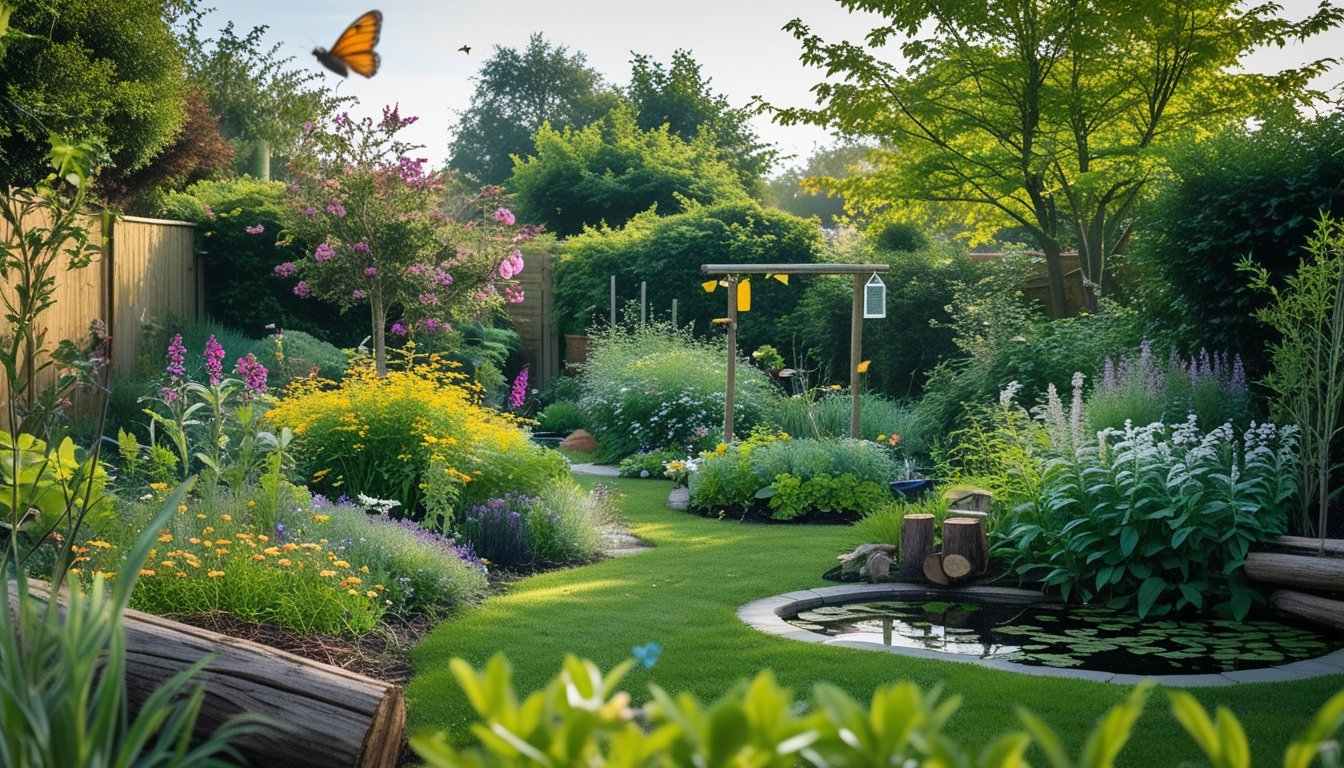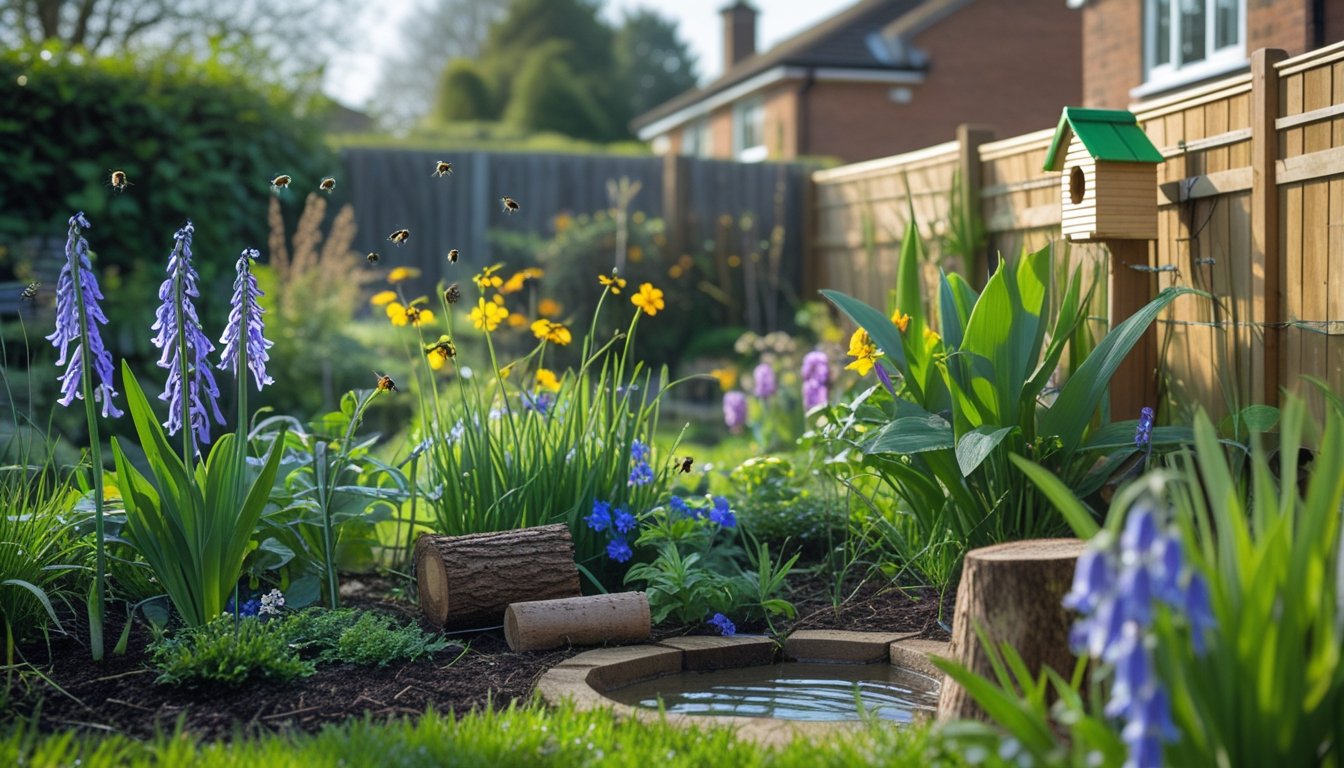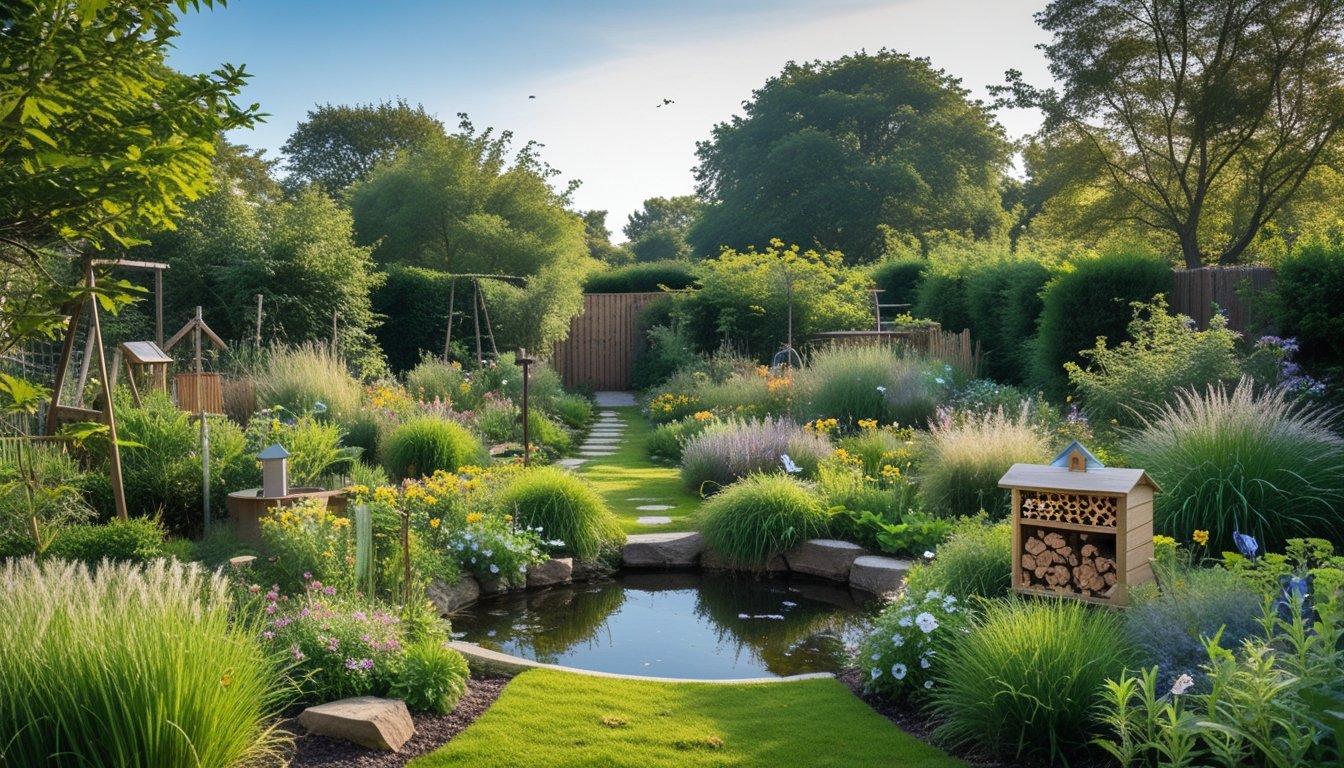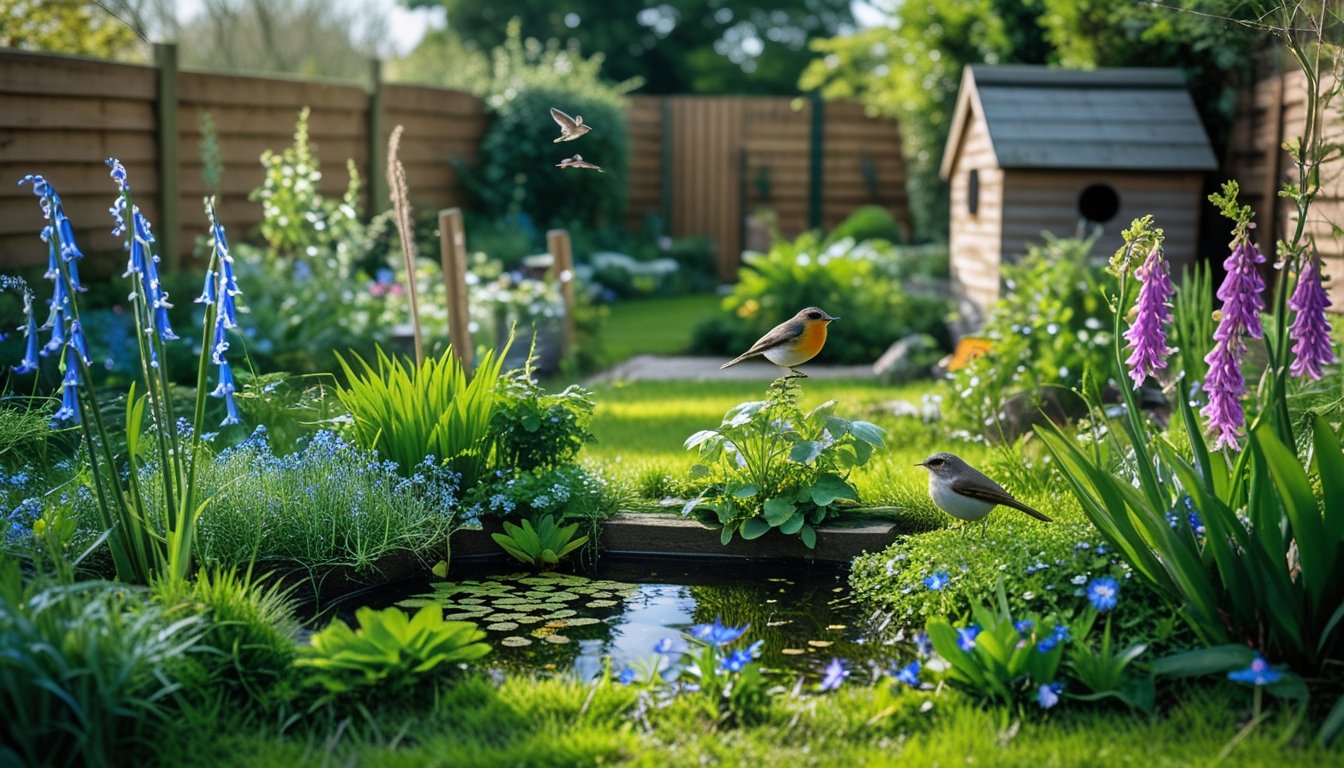Late updated: 26 Oct 2025 10:10
Written by: Emily Thornton
Exploring Native UK Habitats in Your Home Garden: A Practical Guide
Exploring native UK habitats in our home gardens offers an incredible opportunity to support biodiversity while creating a vibrant outdoor space. By incorporating native plants, we recreate the natural environments that provide essential homes and food sources for local wildlife. These plants are perfectly suited to Britain’s climate and soil, making them low-maintenance and effective in promoting ecological health.

Our gardens, regardless of size, can be transformed into miniature ecosystems. By considering habitat types like woodland margins, meadows, or ponds, we welcome a plethora of wildlife into our backyards. With thoughtful planning, these habitats not only improve biodiversity but also enhance the beauty and sustainability of our gardens over time.
Key Takeaways
- Native plants support local wildlife and biodiversity.
- Small adjustments can transform gardens into thriving ecosystems.
- Choosing the right habitat enriches garden sustainability.
Key Native UK Garden Habitats and Their Benefits

Incorporating native UK habitats into our home gardens fosters biodiversity and creates wildlife-friendly spaces. By using native plants, we can replicate local habitats like woodland edges, hedgerows, meadows, and other features that attract and support local wildlife such as pollinators and beneficial insects.
Woodland Edges and Canopies
Woodland edges provide a dynamic environment that supports both trees and a variety of understorey plants. Silver birch (Betula pendula) is often found in these transitional spaces, offering delicate foliage and providing habitats for numerous insects and birds.
Beneath the trees, plants like bluebell and wood anemone thrive, adding bursts of colour in spring. These perennials support a diverse range of pollinators, ensuring the ecological balance within our gardens. We can enhance these areas by planting native shrubs and bulbs that mimic natural woodland conditions.
Hedgerows and Shrub Layers
Hedgerows create layers that support an intricate ecosystem, crucial for both flora and fauna. Common hawthorn (Crataegus monogyna) and blackthorn (Prunus spinosa) are foundational species in these living fences, offering food and shelter for bees, butterflies, and birds.
These shrubs provide a protective habitat for animals, such as nesting birds and small mammals. By adding shrubs like elder, which bears berries in autumn, we increase the foraging options for local wildlife. Our attention to variety in hedgerows enriches the biodiversity and resilience of any garden landscape.
Meadow and Grassland Patches
Transforming a section of our gardens into meadow patches promotes a vibrant array of native grasses and wildflowers. Grasses mixed with perennials like foxglove attract pollinators and beneficial insects.
Meadow habitats require minimal maintenance, mimicking a natural ecosystem that thrives with seasonal change. We leave the grasses to grow tall and wildflowers to seed, creating a dynamic environment that adapts naturally over time. This not only encourages butterflies and bees but also provides a haven for ground-dwelling insects and small mammals.
Wildlife-Friendly Features
Including wildlife-friendly features enhances habitat functionality and accessibility. Simple additions like log piles or small ponds create diverse microenvironments. These features serve as hiding spots for amphibians and grounds for insects.
Creating these structures invites a variety of creatures to our space, increasing overall biodiversity. Ponds, for instance, provide crucial water resources for birds and beneficial insects. By designing gardens with these features, we forge a thriving ecosystem that supports a wide range of native species, offering mutual benefits to plants and wildlife alike.
Practical Approaches for Creating and Maintaining Native Habitats

To create and maintain native habitats in our home gardens, we must focus on three critical areas: preparing the soil, selecting appropriate plants, and applying essential care techniques. Each of these aspects plays a crucial role in fostering a thriving environment for native species.
Soil Health and Site Preparation
Encouraging a vibrant native habitat starts with the soil. Prioritise soil health by testing pH levels and nutrient content. Amend soil with organic materials like compost to enhance fertility and structure. Removing invasive species is crucial to prevent competition with native flora.
Mulching is an effective strategy. It retains moisture, suppresses weeds, and improves soil quality over time. Select mulch made from natural materials to support soil life. Regular soil aeration promotes root health and water infiltration, creating an ideal environment for native plants to flourish.
Plant Selection and Grouping
Opting for the right native plants involves research. Consult native plant societies for suggestions about species suited to local conditions. Prioritise species that sustain local wildlife, such as pollinators and birds, by providing food and shelter.
When arranging plants, emulate natural ecosystems. Group species that thrive together, mixing more robust perennials with smaller shrubs. This approach encourages biodiversity and resilience. Keep in mind plant height, bloom times, and light requirements when planning your garden design. Adopting this method not only boosts visual appeal but also maintains ecological balance.
Essential Care Techniques
Caring for native habitats requires ongoing maintenance. Implementing proper watering techniques is essential, especially during dry spells, to establish young plants. Practice pruning to maintain plant structure and remove dead or diseased growth.
Deadheading spent blooms encourages new growth and prolongs flowering periods. Be vigilant about managing invasive species, as they can disrupt our carefully curated ecosystems. Monitor plant health regularly and adjust care routines as needed to ensure sustainable growth.
Hands-on practices make a noticeable difference in the vitality of native habitats. By focusing on these care techniques, we support the intricate balance of our local ecosystems within the comfort of our gardens.
Frequently Asked Questions

Creating a garden with native UK plants can enhance biodiversity, attract pollinators, and provide habitats for various species. Let's explore how we can foster wildlife-friendly environments in our home gardens.
What are the best native plants to attract wildlife to my UK garden?
To attract wildlife, we suggest choosing plants like the English bluebell, foxglove, and red campion. These native species offer food and shelter for insects and small animals, enriching the garden's ecological network. Additionally, planting wildflowers can invite a variety of helpful insects.
How can I create a habitat for native pollinators in my home garden?
Pollinators love gardens filled with flowers that produce abundant nectar and pollen. We can plant native UK wildflowers such as cowslips, primroses, and marjoram. These not only beautify our garden but also support bees and butterflies crucial for pollination.
What methods can I utilise to encourage bird diversity in my urban garden?
To encourage bird diversity, we might introduce a mix of native trees and shrubs like hawthorn and rowan. Adding bird feeders and baths can provide extra food and water. Creating safe nesting areas can further support a variety of bird species seeking shelter.
Which native UK shrubs and trees are recommended for sustainable gardens?
Sustainable gardens benefit from native shrubs and trees like holly, hazel, and oak. These can improve soil stability and offer habitats for numerous wildlife species. Their deep roots aid in conserving water, making them perfect for eco-friendly gardening practices.
How can I ensure that my garden supports local biodiversity?
To support biodiversity, we can create a varied ecosystem with layers of plants—from ground cover to tree canopy. Including a water feature can attract different species and encourage a broader range of wildlife. Mulching and avoiding chemicals maintain a healthy environment.
What are the ethical considerations when introducing native species into a home garden?
Respecting the local ecosystem is crucial when introducing native species. We should ensure that our plants come from reputable sources to avoid spreading pests or diseases. It is important to check that our chosen plants do not outcompete existing native flora or disturb local wildlife.
